#igbo history
Text

Igbo-Ukwu Archaeology
Glass production: Igbo-Ukwu has one of the oldest glass productions in West Africa. The archeology of Igbo-Ukwu had over 600 prestige objects including complex cast copper-alloy sculptures and more than 165,000 glass and carnelian beads. The most common glass among the 138 analytical results for Igbo-Ukwu beads is soda-lime glass produced using plant ash.Glass beads from Igbo-Ukwu
Igbo-Ukwu is a historically significant archaeological site located in southeastern Nigeria, in what is now Anambra State. The site is renowned for its remarkable discoveries of ancient artifacts that date back to the 9th and 10th centuries AD. The archaeological findings at Igbo-Ukwu have provided valuable insights into the early history and cultural achievements of the Igbo people and their interactions with other civilizations in the region. The artifacts may be associated with the traditional Kingdom of Nri and its priest-king, the Eze Nri.
The significance of Igbo-Ukwu lies in the following aspects: Sophisticated Artifacts: The excavations at Igbo-Ukwu revealed a collection of highly sophisticated and elaborately crafted artifacts, including intricately designed bronze, copper, and iron objects. These artifacts demonstrate the advanced metallurgical skills of the ancient Igbo people and their ability to work with various metals.
The Igbo-Ukwu artifacts predate certain other well-known Nigerian bronze sculpture traditions such as those of Ife and the Benin Kingdom and have contributed to our understanding of the development of metallurgical techniques in Africa.
Cultural Exchange and Trade: The presence of exotic materials like glass beads and imported ceramics at the Igbo-Ukwu site suggests that the people of Igbo-Ukwu were engaged in trade and had connections with other cultures and civilizations, both within and outside of Africa.
Evidence of Social Complexity: The intricate and finely crafted artifacts found at Igbo-Ukwu suggest the existence of a sophisticated and socially complex society. The level of craftsmanship and the variety of artifacts indicate the presence of skilled artisans and a hierarchical social structure.
Influence on Igbo Art and Culture: The artifacts discovered at Igbo-Ukwu have had a profound impact on the understanding and appreciation of Igbo art and culture. They have inspired contemporary Igbo artists and craftsmen and contributed to a sense of cultural identity and heritage.
Recognition of African Achievements: The discoveries at Igbo-Ukwu challenged the outdated notion of Africa as a continent with no significant history or cultural achievements. The site's findings have demonstrated the richness and complexity of ancient African civilizations. The archaeological site of Igbo-Ukwu was first discovered in 1939 when a group of villagers accidentally came across the artifacts while digging a trench. Subsequent excavations conducted in the 1950s and 1970s uncovered a wealth of cultural treasures. The Igbo-Ukwu artifacts are now housed in various museums, including the Nigerian National Museum in Lagos.
Overall, Igbo-Ukwu remains a vital archaeological site that continues to contribute to our understanding of ancient African civilizations and their contributions to human history. 9th Century Igbo-Ukwu face pendantDouble egg pendant, leaded bronze, 9th-10th century, unearthed in Igbo Ukwu, AnambraBronze ornamental staff head, 9th century, Igbo-Ukwu
Glass production: Igbo-Ukwu has one of the oldest glass productions in West Africa. The archeology of Igbo-Ukwu had over 600 prestige objects including complex cast copper-alloy sculptures and more than 165,000 glass and carnelian beads. The most common glass among the 138 analytical results for Igbo-Ukwu beads is soda-lime glass produced using plant ash.

#african#afrakan#kemetic dreams#africans#brownskin#afrakans#brown skin#african culture#igbo#ukwu#anambra#west africa#igbo culture#igbo history#afrakan spirituality
42 notes
·
View notes
Text
This month in Hoodoo History: The Igbo Freedom Landing March
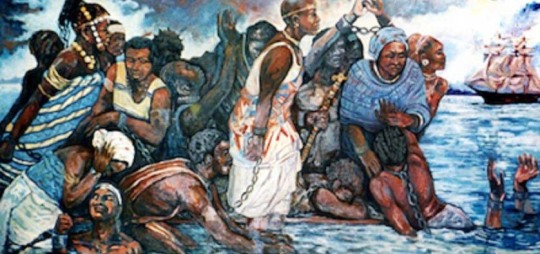
In May of 1803, 75 Igbo men & women chose freedom in death over a life of hell, spurring one of the largest mass suicides in the history of Maafa.
• In May 1803, a British slave ship called, The Wanderer, captured over a hundred Igbo men/women & other West Afrikan Peoples from present-day Nigeria and taken to Savannah, GA.
In Savannah, they were resold into Slavery to be worked to death on plantations along the Georgia coast. The price for each of their lives? $100. They were forcibly transported onto a ship called, the York that set sail for St. Simon's Island.
• During this voyage from Savannah to St. Simon's Island, 75 Igbo men & women rose up against their captors. They drowned the slavers, took control of the ship - grounding it in the Dunbar Creek.
At some point, the Igbo fled the ship. Led by their High Chief, a subset of the Igbo sang as they marched into a salt marsh of Dunbar Creek. One by one, they returned home in the face of a fate worse than death.

• This event that became known as, the Igbo Freedom Landing March, spawned enormous symbolism & folklore in the Afrikan Peoples and their descendants on this land. Many believe that the Freedom Landing and the nearby salt marshes in Dunbar Creek are haunted by the Spirits of the Igbo Peoples who drowned there. It is heralded as the first recorded Freedom March in U.S. history and has long since been a staple in Gullah-Geechee folklore, as the story of the Igbo Peoples who chose death over Slavery.
• Today, Igbo Landing is a nationally recognized historical site. It is located at Dunbar Creek on St. Simon's Island in Glynn County, GA.
• In September 2002, the Afrikan descendant community of St. Simon's Island, GA held a two-day commemoration of this event, including a procession to the salt marshes along Dunbar Creek where the mass suicide took place. They were represented by 75 Afrikan descendants across the country, Haiti, Brazil, & Nigeria. The attendees consecrated the site and did the collective work to elevate the restless Igbo spirits into healing and peaceful transition.

#hoodoo#hoodoos#atr#atrs#the hoodoo calendar#juju#igbo culture#igbo history#igbo#afrikan#igbo freedom landing March#black history#Hoodoo Folklore#west Afrika#Nigeria#Nigerian history#Georgia#Georgia history#Savannah#st simons island#african american folklore#Hoodoo History
138 notes
·
View notes
Text
The best 10 books for learning about Igbo history and culture
Discover Igbo culture and history with these 10 essential books. Perfect for beginners seeking a comprehensive introduction.
1. Political Organization in Nigeria Since the Late Stone Age: A History of the Igbo People
Explore the uncharted political history of the Igbo people, a significant Nigerian ethnic group, before the Trans-Atlantic slave trade. This pioneering study delves into the…
View On WordPress
#books#books about Igbo people#igbo books#igbo culture#Igbo Dictionary for Children#igbo history#igbo people
7 notes
·
View notes
Text
The Nsude pyramid shrines
The Nsude pyramid shrines are pyramidal shrines located in Nsude, a village in southeastern Nigeria. These are structures that were constructed by the Igbo and are made of earth and clay. The anthropologist and colonial administrator G.I. Jones took photos of the pyramids when he saw them in 1935. Over time, the Nsude Pyramids experienced erosion and degradation due to their earthen construction…

View On WordPress
#African architecture#African History#Igbo architecture#Igbo History#Nigeria#The Nsude pyramid shrines
5 notes
·
View notes
Text
One must also note the role of Harold Wilson's government in that war:
Wilson very much channeled the spirit of Churchill and Nixon in cynically encouraging a genocide while openly professing adherence to human rights and making an already horrific situation much, much worse.
#lightdancer comments on history#african history#cold war#black history month#nigerian civil war#igbo history#hausa history
3 notes
·
View notes
Text
My beautiful tribe your so divine
My family my love my life
Why would you let these monsters in
How dare you hurt me in this way
You are no family of mine
I will be stronger to prove you wrong
You don't need these strange white men
What we need is our ancestors to guide us towards the light
#poetscommunity#poetry#poem#sad poems#painful#my poem#poems on life#poemsbyme#daily poems#ancient#ancient tribe#igbo history#things fall apart
9 notes
·
View notes
Text

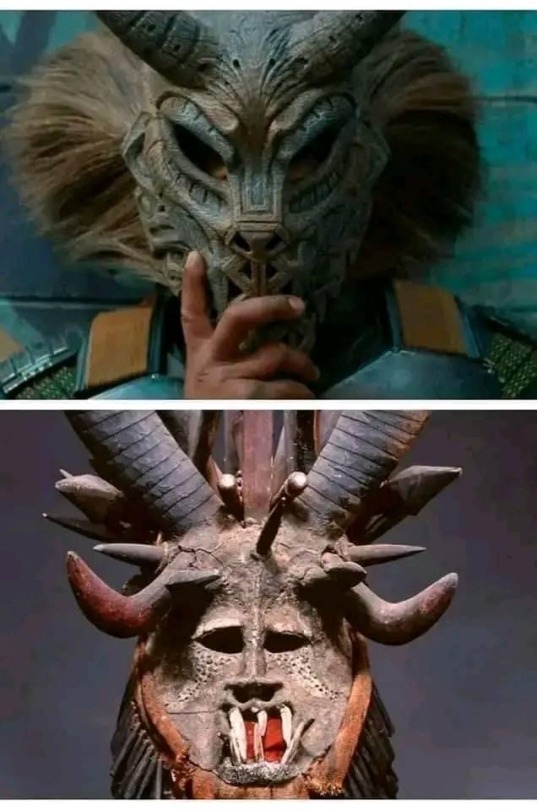
THE IGBO STORY IN THE MOVIE BLACK PANTER
In the movie The Black Panther, Erik Killmonger wore a very distinctive mask that he had taken from the British Museum. Additionally, Killmonger uttered the most famous words of the movie when he said, "just bury me in the ocean with my ancestors who jumped from the ships because they knew that death was better than bondage". There is a deep connection between those words and the mask that Killmonger wore.
The mask of Killmonger is from the Igbo people who are from Eastern Nigeria.
In May of 1803, a significant event took place known as the Igbo Landing. After crossing the Middle Passage, a slave ship arrived in Georgia with a cargo of slaves. 75 of those people were Igbo people and they were sold for roughly $100 each. They were then transferred to another ship to be moved to their destination. Once upon the new ship, the Igbo people rebelled. During the rebellion, the Igbo people killed their captors and took control of the ship. With no way of returning home and facing the likelihood of being recaptured into slavery, the Igbo people agreed to commit suicide...together. They all jumped into the ocean and drowned.
This is what Killmonger was referring to when he said, "just bury me in the ocean with my ancestors who jumped from the ships because they knew that death was better than bondage".
77 notes
·
View notes
Text
can African Americans please stop saying "black culture" in reference to the homogenised African black cultures in the United States please
#its extremely reductive even in America#there are so many black people internationally in different nations with different cultures#im Nigerian i have no idea what cultures are in Uganda#im Yoruba i have no idea what cultures go on in Igbo#im black British so i understand other like Ghanian and Jamaican cultures#im black British and i have so much knowledge about African American culture because it is exported to me and then posed as “my culture” as#a black person. That cant be right#black brit#black people#black culture#aave#i have so many takes on aave ans how other people should be able to use it as a black brit who knows white boys eho say wagwan. it's not as#big of an issue as most people think tbh#African#african american#black history#black cultures#please dont homogenise blackness.
17 notes
·
View notes
Text
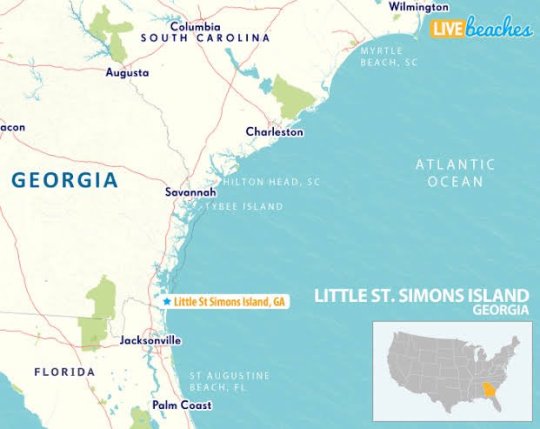
Igbo Landing is the location of a mass suicide of Igbo slaves that occurred in 1803 on St. Simons Island, GA.
81 notes
·
View notes
Text




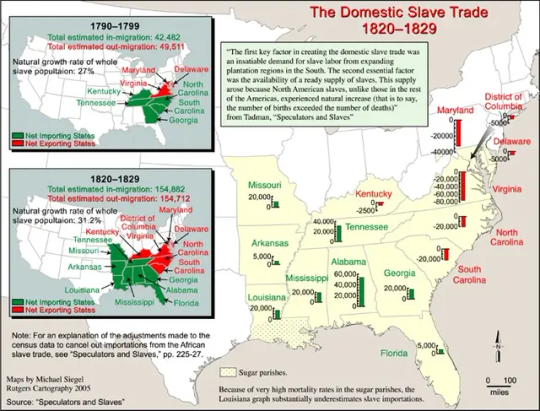


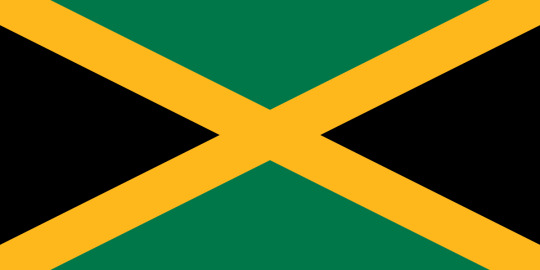



The Igbo in the Atlantic slave trade
Bussa, Barbadian slave revolt leader of Igbo descent
Edward Blyden, Americo-Liberian educator, writer and politician of Igbo descent
Paul Robeson, American actor and writer whose father was of Igbo descent
Aimé Césaire, Martiniquais poet and politician who claimed Igbo descent) argues that many of the slaves taken from the Bight of Biafra across the Middle Passage would have been Igbo. These slaves were usually sold to Europeans by the Aro Confederacy, who kidnapped or bought slaves from Igbo villages in the hinterland. Igbo slaves may have not been victims of slave-raiding wars or expeditions but perhaps debtors or Igbo people who committed within their communities alleged crimes. With the goal for freedom, enslaved Igbo people were known to European planters as being rebellious and having a high rate of suicide to escape slavery. There is evidence that traders sought Igbo women. Igbo women were paired with Coromantee (Akan) men to subdue the men because of the belief that the women were bound to their first-born sons’ birthplace.
It is alleged that European slave traders were fairly well informed about various African ethnicities, leading to slavers targeting certain ethnic groups which plantation owners preferred. Particular desired ethnic groups consequently became fairly concentrated in certain parts of the Americas. The Igbo were dispersed to colonies such as Jamaica, Cuba, Saint-Domingue, Barbados, Colonial America, Belize and Trinidad and Tobago, among others.

Rihanna is also Igbo
Colonial Nigeria
The establishment of British colonial rule in present-day Nigeria and increased encounters between the Igbo and other ethnicities near the Niger River led to a deepening sense of a distinct Igbo ethnic identity. The Igbo proved decisive and enthusiastic in their embrace of Christianity and Western-style education. Because of the incompatibility of the Igbo decentralized style of government and the centralized system including the appointment of warrant chiefs required for British system of indirect rule, the period colonial rule was marked with numerous conflicts and tension. During the colonial era, the diversity within each of Nigeria's major ethnic groups slowly decreased, and distinctions between the Igbo and other large ethnic groups, such as the Hausa and the Yoruba, became sharper.
The establishment of British colonial rule transformed Igbo society, as portrayed in Chinua Achebe's novel Things Fall Apart. Colonial rule brought about changes in culture, such as the introduction of warrant chiefs as Eze (indigenous rulers) where there were no such monarchies. Christian missionaries introduced aspects of European ideology into Igbo society and culture, sometimes shunning parts of the culture. The rumours that the Igbo women were being assessed for taxation sparked off the 1929 Igbo Women's War in Aba (also known as the 1929 Aba Riots), a massive revolt of women never encountered before in Igbo history.
Aspects of Igbo culture such as construction of houses, education and religion changed following colonialism. The tradition of building houses out of mud walls and thatched roofs ended as the people shifted to materials such as concrete blocks for houses and metal roofs. Roads for vehicles were built. Buildings such as hospitals and schools were erected in many parts of Igboland. Along with these changes, electricity and running water were installed in the early 20th century. With electricity, new technology such as radios and televisions were adopted, and have become commonplace in most Igbo households.
A series of black and white, silent films about the Igbo people made by George Basden in the 1920s and 1930s are held in the British Empire and Commonwealth Collection at Bristol Archives

#african#afrakan#kemetic dreams#africans#brownskin#brown skin#afrakans#african culture#afrakan spirituality#igbo#nigerian#british empire#jamaica#jamaican#barbados#igbo culture#igbo history#rihanna
25 notes
·
View notes
Text
16 notes
·
View notes
Text
The Ekumeku Movement Explained
Igbo Culture
How this Igbo group resisted British domination for 30 years
During Britain’s colonisation of Nigeria, one of the most prolonged and drawn-out conflicts was against the Ekumeku. A movement fought by the Anioma, an Igbo subgroup, and their neighbouring Igbo allies.
So, what sparked the beginning of the movement?
As the British looked to complete their colonial domination of the people within…
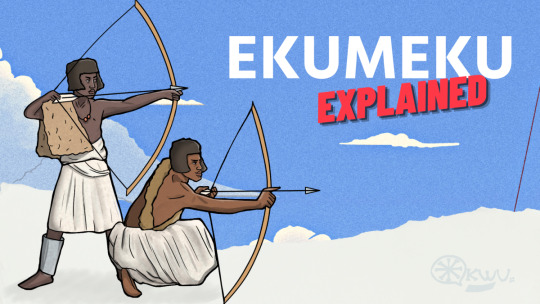
View On WordPress
#30 years ekumeku#a history of delta igbo people#adiele afigbo#akwa ocha#ANIOMA#British native courts#colonialism in nigeria#delta igbo#delta igbo history#EKUMEKU#EKUMEKU WARRIORS#igbo#igbo anime#igbo culture#igbo essays#igbo history#igbo nigerian history#igbo resistance to colonialism#igbo wardfare#Ika Igbo#native courts#nigeria#ogwashi-ukwu#pan igbo#pan-igbo studies
13 notes
·
View notes
Text
Nsibidi: The Ancient Symbolic Proto-Writing Script of Nigeria's Ekpe Society
Nsibidi, also known as nsibiri, nchibiddi, or nchibiddy, holds a significant place in Nigerian history and culture. Developed by the Ekpe secret society, this intricate system of symbols or proto-writing is believed to have originated in the southeastern part of Nigeria. The Nsibidi symbols, numbering several hundred, are classified as pictograms, although some researchers have suggested that…

View On WordPress
#African History#African Proto-writing system#African Writing System#Igbo History#Igbo Writing System#Nsibidi#West African#West African history
0 notes
Text
It's worth the double emphasis that the Nigerian Civil War was seen as a Jihad from the perspective of Lagos:
As with the Boko Haram insurgency, one cannot neatly sever Islam from events run by Muslim fundamentalists who reach for the rifle and enforce rule by terror. To do so is dishonest and cowardly, and to neglect that this is also a ready recourse in Muslim states now as in the past and then the actual conduct is rather more banal and tepid than that is also dishonest and cowardly.
Either way the history of Nigeria includes yet another major persecution of the Igbo and good example of what the British Empire REALLY left behind it and how gleefully it was willing to do so. European concepts of nationalism led to gruesome horrors in Europe and their mirrors in other parts of the world have also done so there.
So is it that this intertwined with the concept of the Jihad in this war.
#lightdancer comments on history#black history month#nigerian history#african history#igbo history#hausa history
0 notes
Text
THE ORAL HISTORY OF IGBO'S AND KOLA NUT
THE ORAL HISTORY OF IGBO’S AND KOLA NUT
Summary:
This nut is a significant part of the Igbo people’s lives and belief system in Nigeria. It has a long history dating back to ancient times and is considered sacred and utilized in various ceremonies, rituals, and social gatherings. The kola nut serves as a symbol of hospitality, friendship, and goodwill and is an integral part of the cultural…

View On WordPress
3 notes
·
View notes
